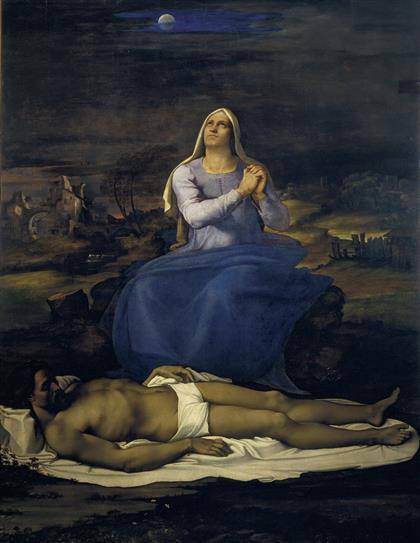
Diego Rivera, Juchitán River (Río Juchitán), 1953-1955, oil on canvas on wood, Mexico, INBA, Museo Nacional de Arte © 2017 Banco de México Diego Rivera Frida Kahlo Museums Trust, Mexico, D.F. / Artists Rights Society (ARS), New York
‘México 1900–1950’ at the Dallas Museum of Art The Dallas Museum of Art, in collaboration with the Mexican Secretariat of Culture, presents ‘México 1900–1950: Diego Rivera, Frida Kahlo, José Clemente Orozco, and the Avant-Garde’. March 12 through July 16, 2017]]>
Source: Dallas Museum of Art
”México 1900–1950: Diego Rivera, Frida Kahlo, José Clemente Orozco, and the Avant-Garde” is a sweeping survey featuring almost 200 works of painting, sculpture, photography, drawings, and films that document the country’s artistic Renaissance during the first half of the 20th century. Curated by Agustín Arteaga, the DMA’s new Eugene McDermott Director, and the result of a combined cultural endeavor between Mexico and France, this major traveling exhibition showcases the work of titans of Mexican Modernism alongside that of lesser-known pioneers, including a number of rarely seen works by female artists, to reveal the history and development of modern Mexico and its cultural identity.
Organized thematically and presented in both English and Spanish, “México 1900–1950” reveals how Mexican 20th-century art is both directly linked to the international avant-garde and distinguished by an incredible singularity, forged in part by the upheaval and transformation caused by the Mexican Revolution in the early 1900s. The exhibition begins with an introduction to the 19th-century imagery and traditions that pre-dated and, in turn, inspired Mexican Modernism, and includes work produced by Mexican artists living and working in Paris at the turn of the century. It then examines how the Revolution helped cement both a new national identity and a visual culture in Mexico, as embodied most famously by the murals of Rivera, Orozco and David Alfaro Siqueiros.
At the same time, México 1900–1950 goes beyond these mythic artists to reveal alternative narratives in Mexican art, including a significant emphasis on the work of female artists, who were supported by patrons like Dolores Olmedo and María Izquierdo. The thematic section “Strong Women” includes work by Frida Kahlo and her lesser-known but equally distinguished compatriots, including artists like Nahui Olin, photographer Tina Modotti, multidisciplinary artist Rosa Rolanda, and photographer Lola Álvarez Bravo, among others. Representing the response of Mexican artists to art movements from around the world with a cosmopolitan vision, the exhibition also features the artwork of abstract sculptor German Cueto, Manuel Rodríguez Lozano, Abraham Ángel, Roberto Montenegro and Rufino Tamayo. A final section reveals the cross-pollination specifically between American and Mexican artists and the resulting profound effect this had on art production in both countries.
Related content
Frida Kahlo: The broken column (self-portrait), 1944
Follow us on:


